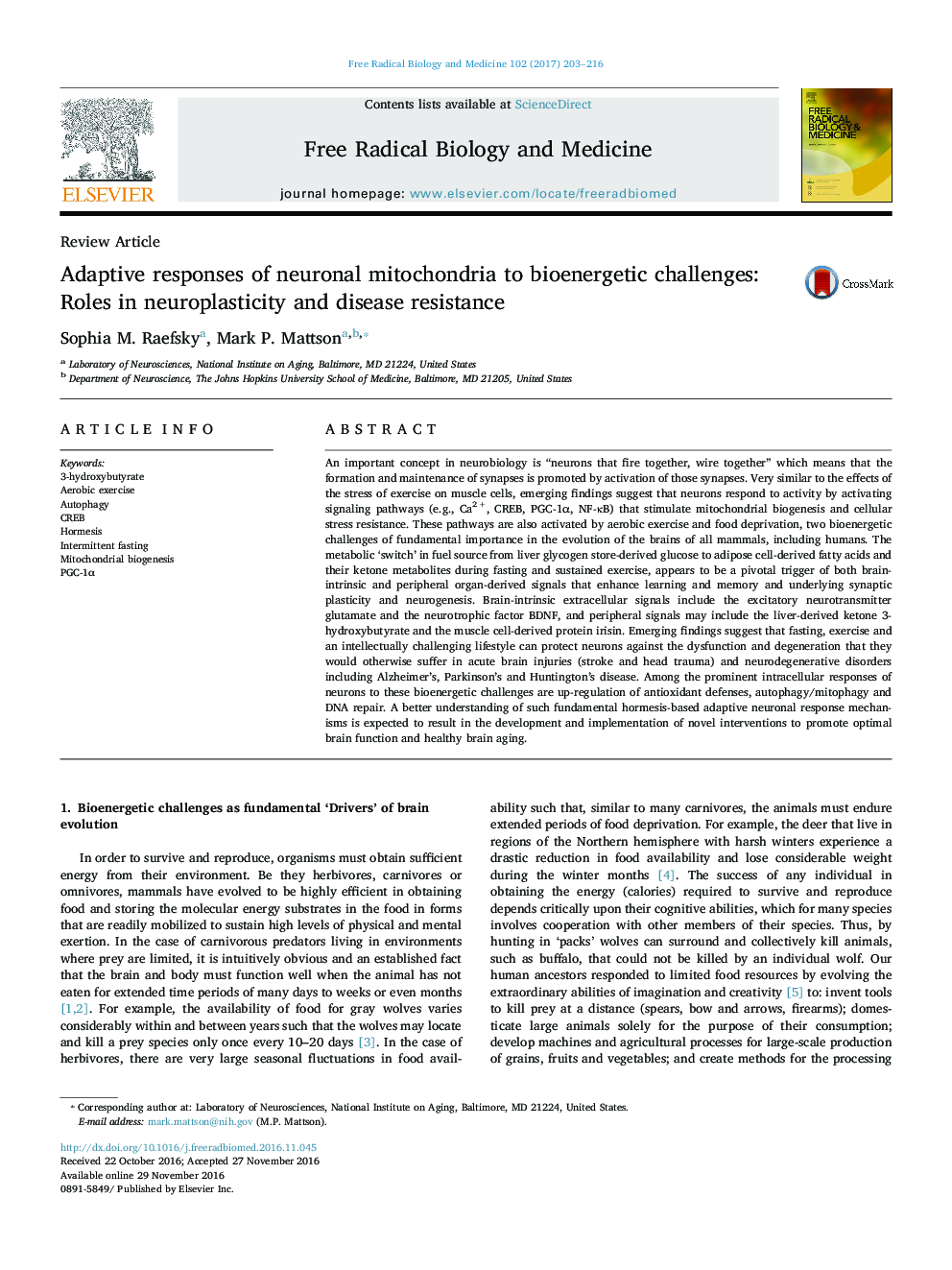| کد مقاله | کد نشریه | سال انتشار | مقاله انگلیسی | نسخه تمام متن |
|---|---|---|---|---|
| 5501985 | 1534941 | 2017 | 14 صفحه PDF | دانلود رایگان |
عنوان انگلیسی مقاله ISI
Adaptive responses of neuronal mitochondria to bioenergetic challenges: Roles in neuroplasticity and disease resistance
ترجمه فارسی عنوان
پاسخ های سازگار میتوکندری عصبی به چالش های زیست محیطی: نقش نئوپلاستی و مقاومت به بیماری
دانلود مقاله + سفارش ترجمه
دانلود مقاله ISI انگلیسی
رایگان برای ایرانیان
کلمات کلیدی
موضوعات مرتبط
علوم زیستی و بیوفناوری
بیوشیمی، ژنتیک و زیست شناسی مولکولی
سالمندی
چکیده انگلیسی
An important concept in neurobiology is “neurons that fire together, wire together” which means that the formation and maintenance of synapses is promoted by activation of those synapses. Very similar to the effects of the stress of exercise on muscle cells, emerging findings suggest that neurons respond to activity by activating signaling pathways (e.g., Ca2+, CREB, PGC-1α, NF-κB) that stimulate mitochondrial biogenesis and cellular stress resistance. These pathways are also activated by aerobic exercise and food deprivation, two bioenergetic challenges of fundamental importance in the evolution of the brains of all mammals, including humans. The metabolic 'switch' in fuel source from liver glycogen store-derived glucose to adipose cell-derived fatty acids and their ketone metabolites during fasting and sustained exercise, appears to be a pivotal trigger of both brain-intrinsic and peripheral organ-derived signals that enhance learning and memory and underlying synaptic plasticity and neurogenesis. Brain-intrinsic extracellular signals include the excitatory neurotransmitter glutamate and the neurotrophic factor BDNF, and peripheral signals may include the liver-derived ketone 3-hydroxybutyrate and the muscle cell-derived protein irisin. Emerging findings suggest that fasting, exercise and an intellectually challenging lifestyle can protect neurons against the dysfunction and degeneration that they would otherwise suffer in acute brain injuries (stroke and head trauma) and neurodegenerative disorders including Alzheimer's, Parkinson's and Huntington's disease. Among the prominent intracellular responses of neurons to these bioenergetic challenges are up-regulation of antioxidant defenses, autophagy/mitophagy and DNA repair. A better understanding of such fundamental hormesis-based adaptive neuronal response mechanisms is expected to result in the development and implementation of novel interventions to promote optimal brain function and healthy brain aging.
ناشر
Database: Elsevier - ScienceDirect (ساینس دایرکت)
Journal: Free Radical Biology and Medicine - Volume 102, January 2017, Pages 203-216
Journal: Free Radical Biology and Medicine - Volume 102, January 2017, Pages 203-216
نویسندگان
Sophia M. Raefsky, Mark P. Mattson,
